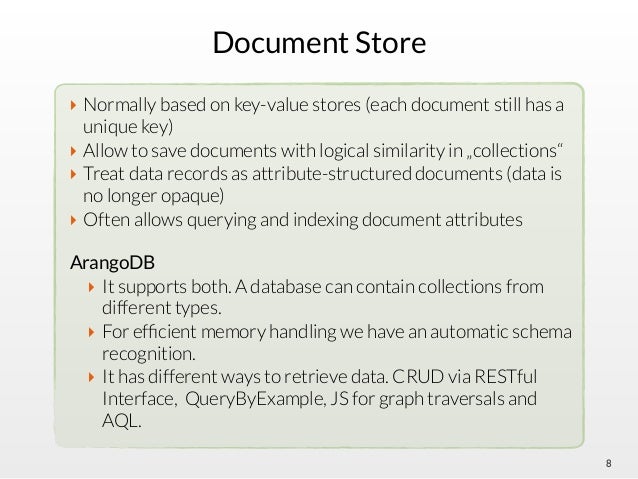

Thanks to our Series B funding, expect to see even more from ArangoDB in 2022, which we are already counting down the days until we are able to share. It is also a testament to the support and backing that we have from our community. This milestone is a result of all the hard work and belief that has gone into building our product. This blog post recaps a few of our favorite moments from the last year and to get excited about what 2022 has in store for ArangoDB.Ģ021 ended on a strong note with our announcement in early October that we raised a $27.8 million Series B funding round led by Iris Capital. 2021 was a big year for ArangoDB, and none of it would have been possible without the hard work and dedication of our team, as well as the continuous support from our community. Using ArangoML for common tasks associated with model management.As the new year begins, It’s time to take a step back and reflect on 2021.Using ArangoML to develop graph neural networks on graphs stored in ArangoDB.Using ArangoML for common network analysis tasks such as discovering structures.In the upcoming series, we will showcase topics such as: This article is the first in a series covering the many different features of ArangoML. Stay Tunedīe sure to sign up for our newsletter to be notified of the follow-up posts in this series! If you would like to learn more about using KGs with ArangoDB take a look at the upcoming Knowledge Graphs in ArangoDB series. Thanks to the features that come with using a multi-model database, it is possible to work with Knowledge Graphs(KGs) in ArangoDB this combines the benefits of still being machine-readable while having the human readability benefits of a property graph. Therefore the ArangoDB-Networkx adapter can be used to develop machine learning applications with ArangoDB graphs using libraries such as DGL. Machine learning libraries such as DGL accept NetworkX graphs as input. Arangopipe is ArangoDB’s tool for managing machine learning pipelines. The steps involved in constructing the pipeline are expressed as a graph by most tools, making ArangoDB a natural fit to store and manage machine learning application metadata. Metadata describes the components and actions involved in building the machine learning pipeline. Managing machine learning pipelines is achieved through metadata. They make it possible for applications to learn from new data. A key idea in making this possible is the use of machine learning pipelines. In contrast to exploring relationships or entities in a graph, machine learning applications learn autonomously and continuously with new data. If you would like to explore some of the existing notebooks, you can find more examples in the repository. We will cover our NetworkX implementation in greater detail in our upcoming network analytics post, be sure to sign up for our newsletter to be notified on the upcoming posts in this series. You can leverage ArangoDB’s robust, reliable, and high-performing storage solution with the wide range of algorithms for graph analytics in NetworkX. We provide an adapter to convert ArangoDB graphs to NetworkX graphs.

If your application requires such algorithms, you can leverage the implementation of these algorithms’ for your ArangoDB graphs. ArangoDB-NetworkX Adapter: NetworkX is a widely used tool for graph analytics it provides robust implementations of many algorithms used for graph analytics.See our pregel tutorial for examples and an overview of using Pregel with ArangoDB. Pregel: Data engineers use Pregel, a system for large-scale graph processing, to implement computationally intensive data transformations, while data scientists use it for data analysis tasks on large graphs.See the AQL Fundamentals for an overview of AQL and some examples of using AQL to query graphs in ArangoDB.

These features make machine learning tasks more powerful and accessible to both the data scientists performing exploratory data analysis and the dev-ops personnel running ad hoc queries for maintenance and issue investigation.


 0 kommentar(er)
0 kommentar(er)
